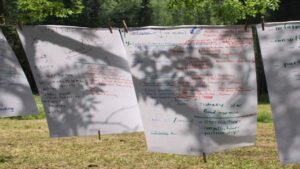Abstract/Description
The Annapurna Mountain region of Nepal is known for its high-altitude mountains, freshwater lakes, gorges, and valleys, and is home to various cultural and linguistic groups like Gurungs, Magars, and Thakalis. Rich biodiversity and cultural diversity of the region attracts many tourists. For more than two decades, this has prompted the Nepali State and its international and local development partners to develop the potential of tourism-based livelihood opportunities for the locals. Policies and development programs have thus focused on encouraging locals to set up community homestay and agriculture businesses along the popular trekking routes. In this study, we present a case of a village community in the region that is working on its vision to develop such an agrotourism enterprise to broadly ask how a community builds its collective aspirations and what role digitalization plays in such aspiration building. We draw upon the ideas of autonomous design to centrally position a community’s ability to design its future by defending and performing its communal visions of life and life activities. In so doing, we move existing aspirations-based approaches within ICT4D research to pay more attention to the questions of power: for instance, “who has power to aspire?” and “how do communities challenge false aspirations and create conditions for nurturing realistic aspirations?”. Insights from our autonomous-design-framework and empirical case are then used to generate broader theoretical implications about the role of hope and aspirations to shape IT-enabled social change for mountain communities.


